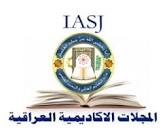Spatial Analysis of Tuberculosis (TB) Disease in Iraq, 2019–2021: Using a Geographical Information Systems Approach
Abstract
Spatial analysis involves examining global and local spatial autocorrelation using statistical measures such as Moran's I and +Getis-Ord. We used Arc GIS 10.8 to analyze the data. The autocorrelation coefficient results revealed a specific pattern in the tuberculosis (TB) incidence distribution across different provinces in 2019 The Moran's I value is 0.188 with a corresponding p-value of (0.0.52) was statistically significant clustering. In four provinces (Diyala, Baghdad, Babil, and Wasit districts), BT incidence was clustered overall study area. The findings from the spatial examination of tuberculosis prevalence in the northeastern region of the country indicate the presence of four high-prevalence hotspot clusters (H-H) and one low-prevalence spatial outlier (L-H) in the year 2019. In 2020 (Morans I: 0.109, P = 0.165), distribution of TB overall country was random. Cluster analysis shows that one is a spatial cluster (H-H) hotspot located in Baghdad and the other randomness overall of the country. In 2021 (Moran's I: 0.237, P = 0.016) spatial analysis of TB for all countries was clustered. The analysis identifies four spatial groupings (H-H) and one spatial anomaly (L-H). The results showed that there are four groups of spatial hotspots located in different regions of Iraq, which can be identified as follows: Diyala, Baghdad, Diwaniyah, and Wasit, while the Karbala region is the least hotspot.




